order
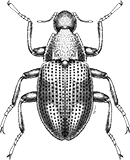
Coleoptera
“Adult Beetles”

Coleoptera
“Larval Beetles”

Diptera
“True Flies”

Ephemeroptera
“Mayflies”
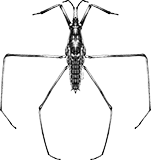
Hemiptera
“True Bugs”

Lepidoptera
“Aquatic Caterpillars, Snout Moths”

Megaloptera
“Alderflies, Dobsonflies, and Fishflies”
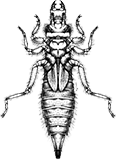
Odonata
“Dragonflies and Damselflies”
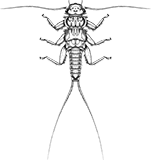
Plecoptera
“Stoneflies”
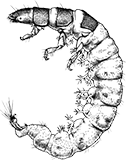
Trichoptera
“Caddisflies”
family
Leuctridae
genus
Leuctra
“Rolled-winged Stoneflies”
Genus Overview
Not much is known about the life history of these larvae. Only 9 of the 26 species in North America are well described by science. Most are detritivorous shredders, like other shredders it is thought that they don’t get nutrients directly from the decaying leaves they eat, but from the periphyton and fungi growing on the leaves. Some may also be facultative collector-gatherers. They can be found in lotic-erosional and depositional habitats, usually preferring riffles. Typically, when found in small streams they are semivoltine (completing less than one generation per year), and in large warm streams they are univoltine (completing one generation per year). Generally, species of Leuctra are intolerant of pollution, but some species can tolerate low pH (very acid) conditions.
Characteristics
POLLUTION TOLERANCE
Southeast: 0.7
Mid-Atlantic: 0
0 = least tolerant, 10 = most tolerant
FEEDING HABITS
Collector / Gatherer
Shredder / Detritivore
Shredder / Detritivore
MOVEMENT
Clinger
Sprawler
Sprawler
DISTRIBUTION
Widespread (east of the Rocky Mtns.)
HABITAT
Lotic-depositional
Lotic-erosional
Lotic-erosional
Diagnostic Characters
order
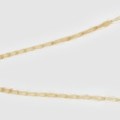
Two Tails
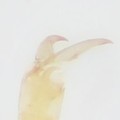
Two Tarsal Claws
family
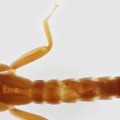
Hind Legs Don't Reach
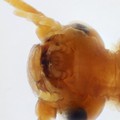
Large Postmentum
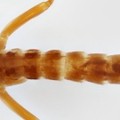
Membranous Pleural Fold
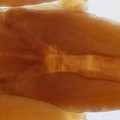
Parallel Hind Wing Pads
+ Expanded Character List
Order:
Wings developing in wing pads. Mouthparts suitable for chewing. Gills digitiform and located near mouthparts, on neck, sides of thorax, or underside of base of abdomen, never on top or sides of abdomen. Two tarsal claws per leg. Only two tails (cerci).
Family:
Body long and slender, abdomen roughly cylindrical. Paraglossae and glossae about same length, suitable for shredding. Postmentum large, covering bases of maxillae. Hind wing pads more or less parallel with body axis, and typically longer than wide. First tarsal segment of each leg much longer than second. When extended, hind legs not reaching end of abdomen. Membranous pleural folds occur on no more than abdominal segments 1–7.
Genus:
Body long and narrow (length greater than 8 times width). Abdomen almost completely hairless or with variable coverage of curved setae. Abdominal terga with posterior fringe of short setae, but last few segments with 2–4 long setae. Abdominal segments 1–4 divided ventrolaterally by membranous pleural folds that are often inconspicuous.
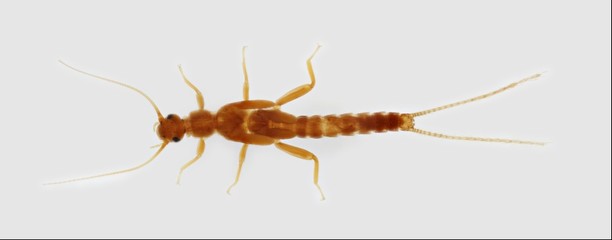
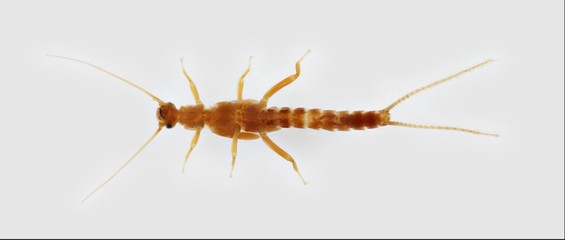
Dorsal
Ventral



